9 Companion Plants for Spinach (with Pictures)
-
Pete Ortiz
- Last updated:
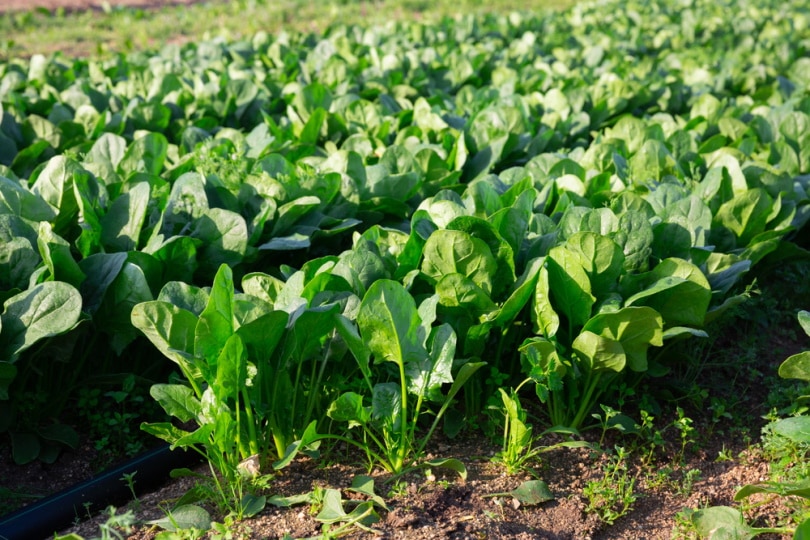
Companion planting refers to the practice of planting certain plants together to maximize their benefits. This age-old practice traces its origins as far back as 10,000 years ago when native Americans interplanted squash, beans, and corn. By pairing plants with compatible needs, you can create a thriving ecosystem in your garden.
Spinach is a nutrient-dense garden vegetable great for growing in home gardens, but it can be even better if you pair it with the right companion plants. Here, we’ll discuss some of the best companion plants for spinach and explain why they are beneficial to this leafy green vegetable.
The 9 Companion Plants for Spinach
1. Radish
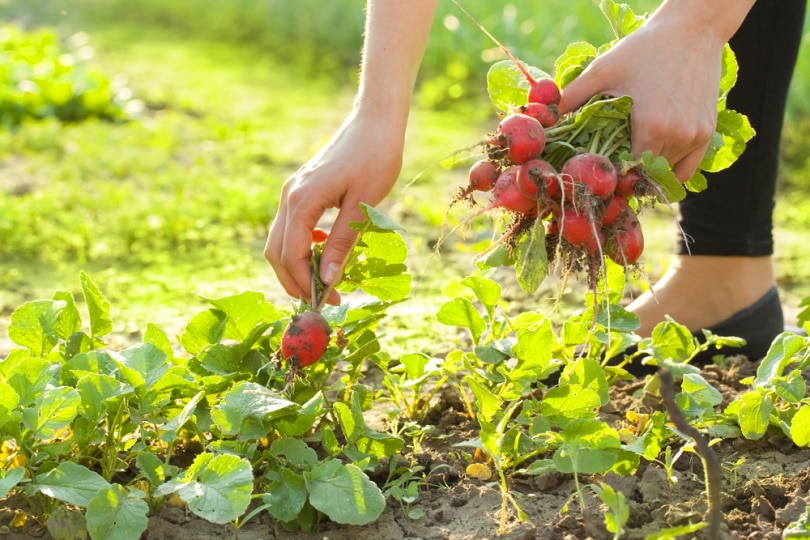
| Native region: | Asia |
| USDA hardiness zone: | 2 to 11 |
| Soil pH: | 6 to 7 |
| Height: | 4 to 14 inches |
Radishes are great companion plants for spinach since they can be a trap crop for leaf-mining insects like sawflies and some beetle species. The plant’s pungent odor repels these pests and attracts a wide range of beneficial insects that can help keep spinach healthy. In return, spinach adds essential minerals to the soil, which benefits radishes.
2. Garlic
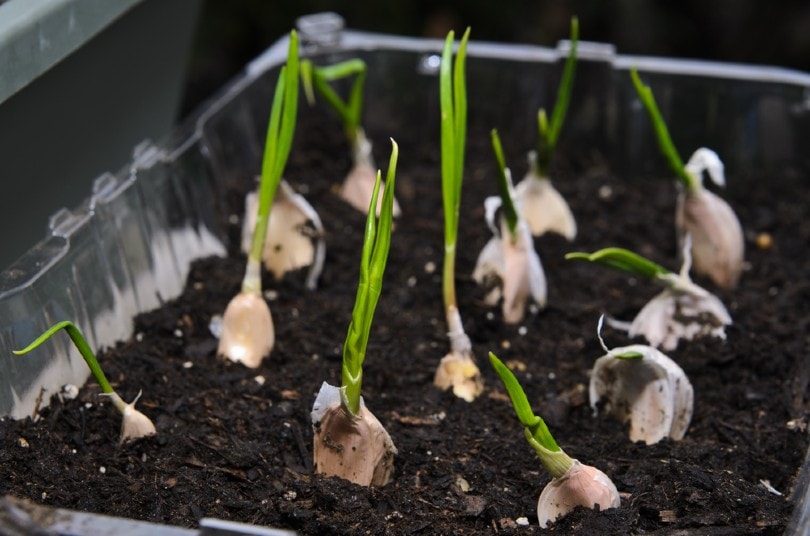
| Native region: | Middle Asia |
| USDA hardiness zone: | 1 to 5 |
| Soil pH: | 6 to 7 |
| Height: | 18 to 24 inches |
Like radishes, garlic is a pungent and aromatic plant that can help repel leaf-mining insects and other pests. Apart from repelling these pests, garlic also accumulates sulfur naturally, making it an excellent fungicide that helps repel diseases like spinach rust.
Garlic also has the added benefit of being able to improve soil health and fertility by adding organic matter and nutrients like nitrogen and phosphorus. Additionally, the strong aroma of garlic can also help deter rabbits and other small animals from eating spinach.
3. Chives
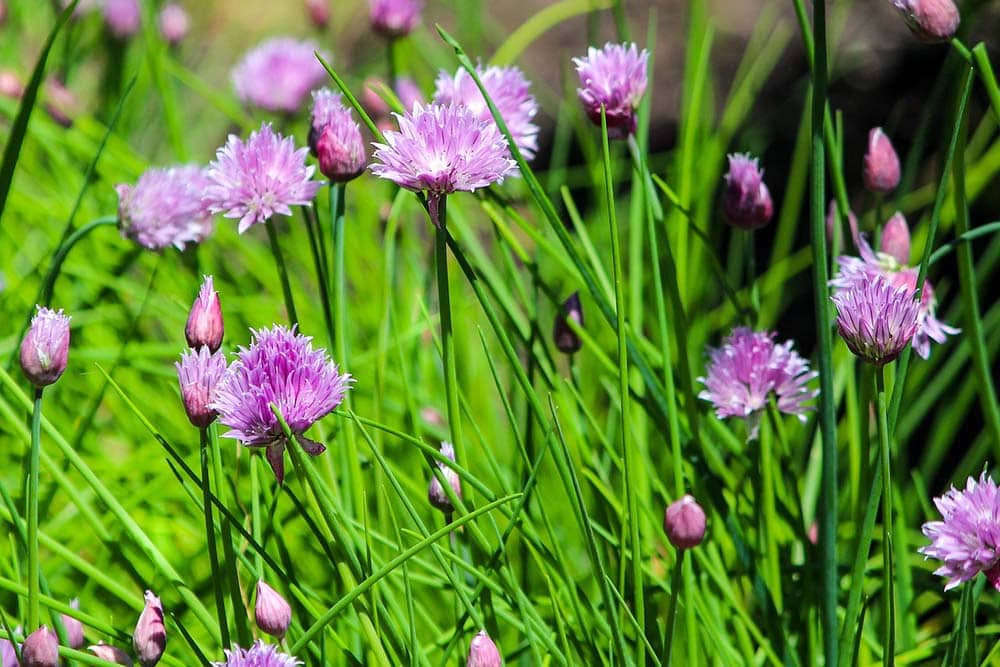
| Native region: | Europe, Asia, North America |
| USDA hardiness zone: | 3 to 10 |
| Soil pH: | 6 to 7 |
| Height: | 12 to 24 inches |
This perennial vegetable is a great companion plant to spinach. That’s because chives help repel harmful pests like aphids. They also attract beneficial insects and improve spinach yield.
Additionally, spinach and chives are both slow-growing plants that don’t take up a lot of space in the garden. The best strategy is to transplant your spinach and plant them around a perimeter of chives.
4. Peas
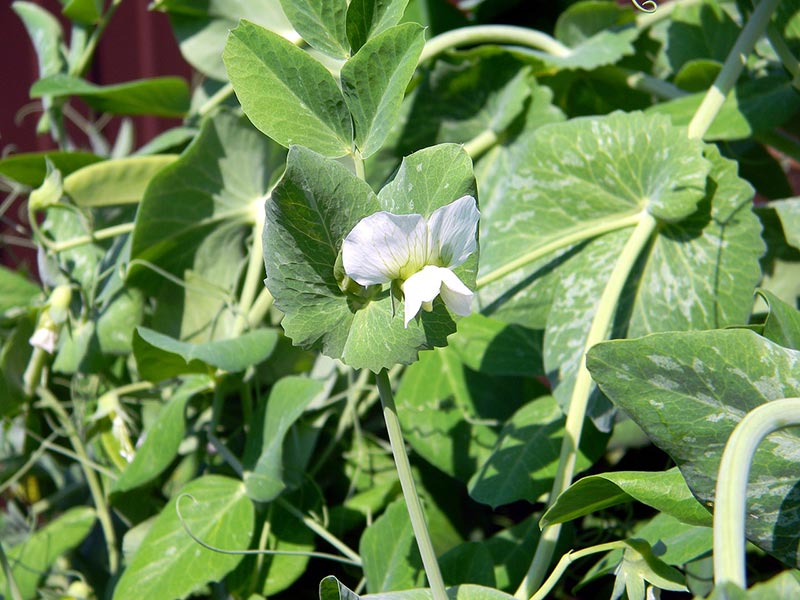
| Native region: | Afghanistan, Southern India, Ganges Basin |
| USDA hardiness zone: | 2 to 11 |
| Soil pH: | 6 to 7.5 |
| Height: | 2 to 3 feet |
Interplanting peas with spinach helps save both time and money. Peas add nitrogen to the soil, which spinach needs in order to grow. Additionally, spinach and peas both have shallow roots, so they don’t compete with each other for resources like light, nutrients, and water.
The pea vines can be used as a trellis for spinach plants that need support to grow upright. Overall, companion planting spinach and peas can be a great way to ensure that both plants thrive in your garden. Whether you’re interplanting them or just growing them side-by-side, spinach and peas are sure to become a dynamic duo in your garden!
5. Tansy
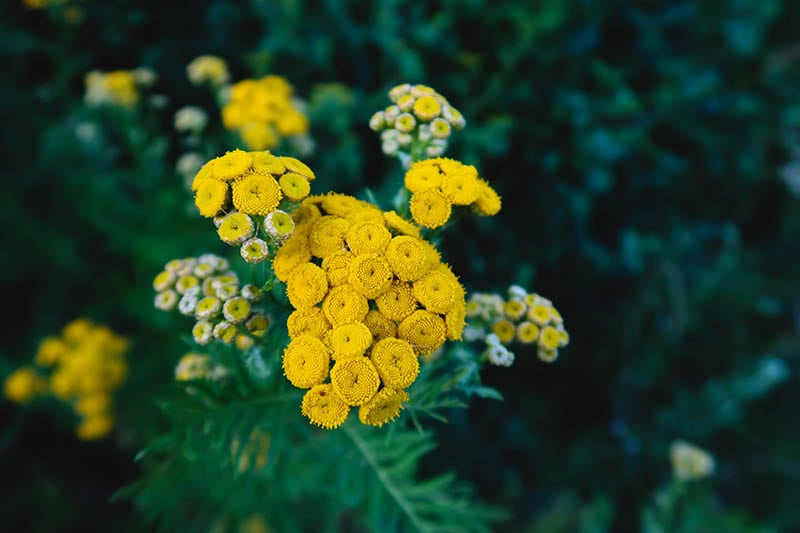
| Native region: | Eurasia |
| USDA hardiness zone: | 4 to 8 |
| Soil pH: | 4.8 to 7.5 |
| Height: | 2 to 5 feet |
Tansy is a fern-like herb that produces yellow flowers and heavily-scented perennial foliage. It makes an excellent companion plant for spinach since it’s able to repel harmful pests like aphids and beetles that can damage your spinach.
The strong aroma of tansy also helps to mask the spinach leaves from being a target of pests, as they may find it too pungent and unpleasant to eat. Additionally, the yellow flowers that bloom on tansy plants can attract beneficial pollinators like bees, which will help keep your spinach healthy by ensuring proper pollination.
However, be careful with the leaves of tansy plants since they’re toxic to both humans and animals. Ensure some distance between your tansy and spinach plants so that you don’t accidentally pluck a tansy leaf while plucking your spinach.
6. Nasturtium
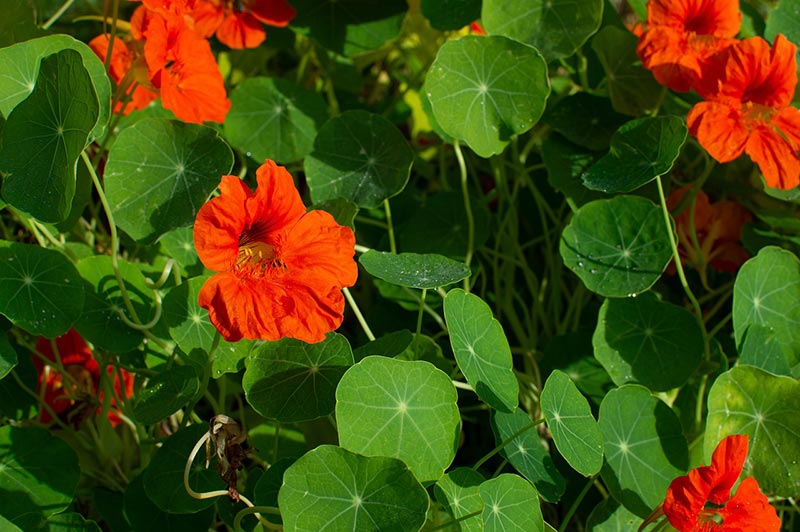
| Native region: | South and Central America |
| USDA hardiness zone: | 9 to 11 |
| Soil pH: | 6.1 to 7.8 |
| Height: | 1 to 10 feet |
Nasturtium is a beautiful flowering plant that makes an ideal companion plant for spinach. The plant attracts beneficial insects that can protect spinach from harmful pests, such as aphids and beetles.
In addition to its pest-repelling abilities, nasturtium also functions as a natural fertilizer for spinach. It’s worth noting that nasturtiums can grow quite large, and it’s best to keep them a fair distance away from your spinach, or they’ll ramble over them.
7. Dwarf Sunflowers
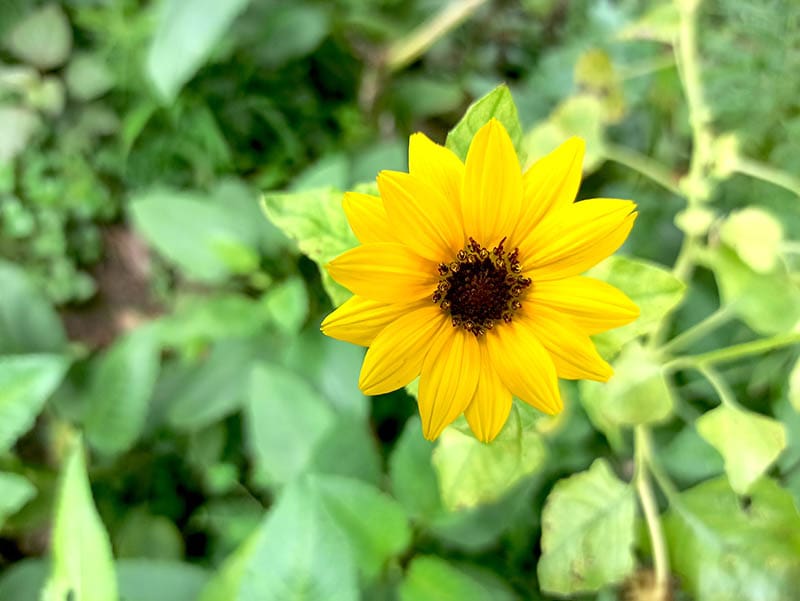
| Native region: | North America |
| USDA hardiness zone: | 3 to 9 |
| Soil pH: | 5.6 to 7.8 |
| Height: | 1 to 12 feet |
Dwarf sunflowers are another great companion plant for spinach, as they’re able to attract a wide range of pollinators and beneficial insects that can help keep spinach crops healthy and thriving.
In addition to their pollination capabilities, dwarf sunflowers also help spinach by giving them much-needed shade as the spinach plants grow taller. And, when the spinach starts to produce flowers, the dwarf sunflowers can be harvested for use in cooking or as a garnish on salads or other dishes.
8. Cauliflower
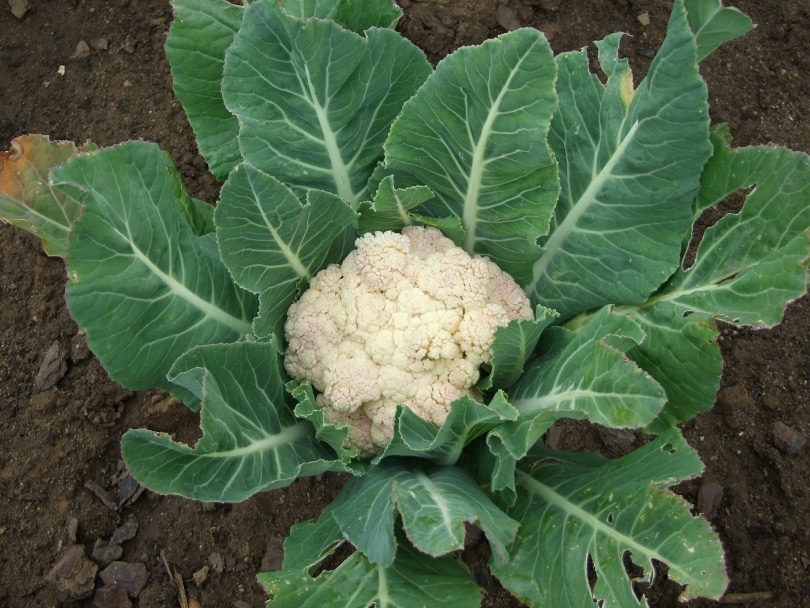
| Native region: | Central Asia |
| USDA hardiness zone: | 1 to 11 |
| Soil pH: | 6.9 to 7.8 |
| Height: | 3 to 4 feet |
Cauliflowers are certainly large plants that take up a lot of space, which makes them a hard sell for your garden. But did you know that interplanting cauliflower and spinach offers a host of benefits?
First, cauliflower is a nitrogen fixer, which spinach needs for healthy growth. Additionally, spinach and cauliflower tend to have shallow roots that don’t compete with each other for water and nutrients from the soil.
As the cauliflower grows, it can act as a support system to help spinach plants stand upright and prevent them from falling over. Finally, the spinach leaves can be used to wrap and cook cauliflower as a tasty side dish!
9. Broccoli
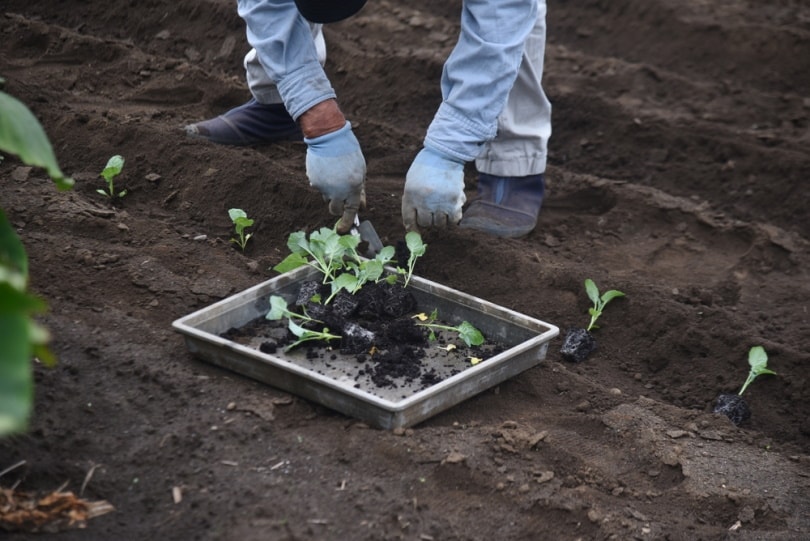
| Native region: | Mediterranean |
| USDA hardiness zone: | 2 to 11 |
| Soil pH: | 6.0 to 6.8 |
| Height: | 1 to 3 feet |
The large leaves of Broccoli provide young spinach plants with much-needed shade to ensure they stay cool. Additionally, spinach will benefit from the nutrients and organic matter that are added to the soil through Broccoli’s deep root system.
Finally, as your spinach plants begin to grow larger, they can be used to support young broccoli seedlings until they’re ready for transplantation into a more permanent location.
Worst Companion Plants for Spinach
Not all plants deserve a spot in your spinach garden. Here are a couple of plants that should go nowhere near your spinach.
1. Potatoes
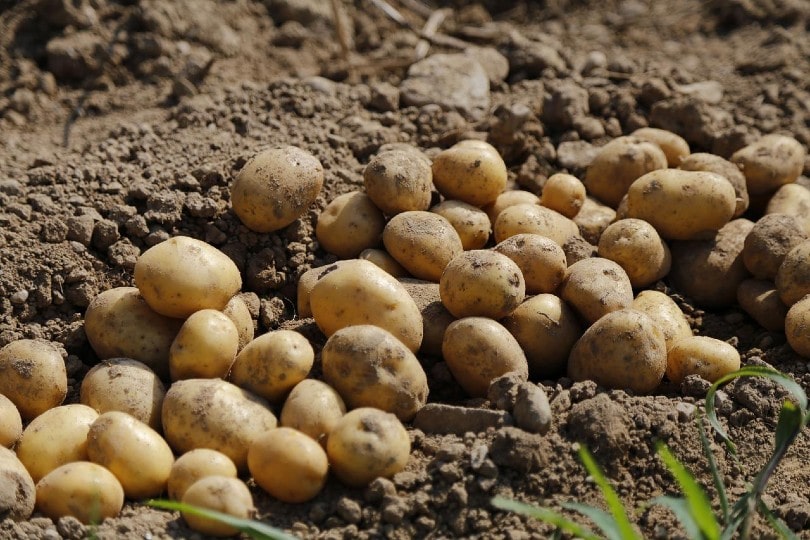
It’s never a good idea to plant potatoes with your spinach. First, spinach and potatoes are both typically planted in the same soil, which means that spinach may compete with potatoes for nutrients.
Additionally, potatoes can act as a host for potato blight, a disease that can infect and kill your spinach plants. As such, it’s best to keep potatoes and spinach far away from each other in your garden.
2. Fennel
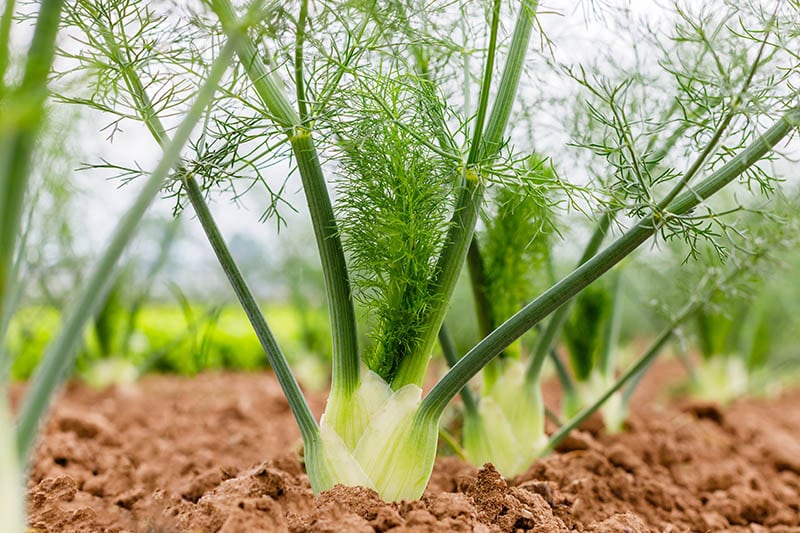
Fennel and spinach are two plants that typically struggle to grow well in the same area. Fennels have long, tap roots that can quickly outcompete spinach for essential nutrients and water from the soil. This can lead to spinach stunting or even dying.
Additionally, fennel produces a pungent odor that can quickly overwhelm spinach plants, making it difficult for them to thrive in close proximity. While spinach and fennel may work well as companion plants in some situations, it’s best to avoid planting them together whenever possible.
3. Mint
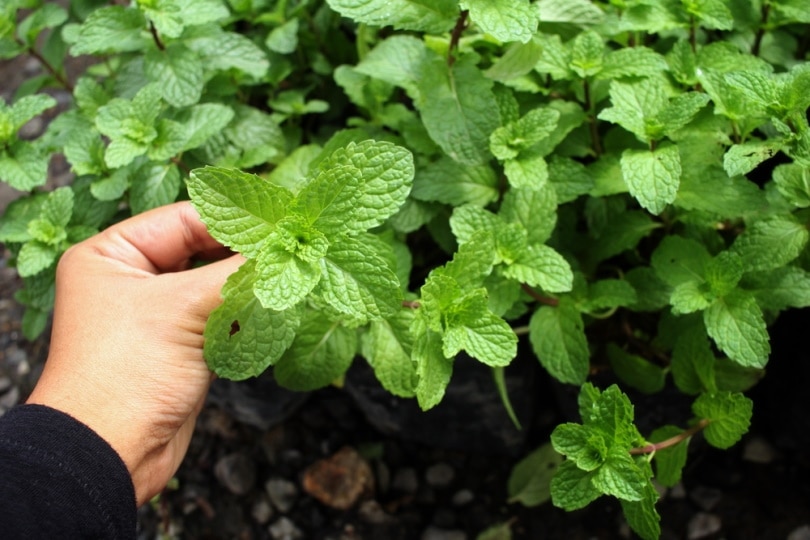
Mint should never be planted near spinach, as it can quickly become invasive and overtake spinach plants in your garden. Mint leaves contain a compound called menthol, which makes spinach leaves bitter and less palatable.
Additionally, mint can spread quickly through underground roots, quickly choking out spinach plants. As such, it’s best to avoid growing spinach and mint together if you want to ensure your spinach has the best possible chance of flourishing in your garden.
4. Corn
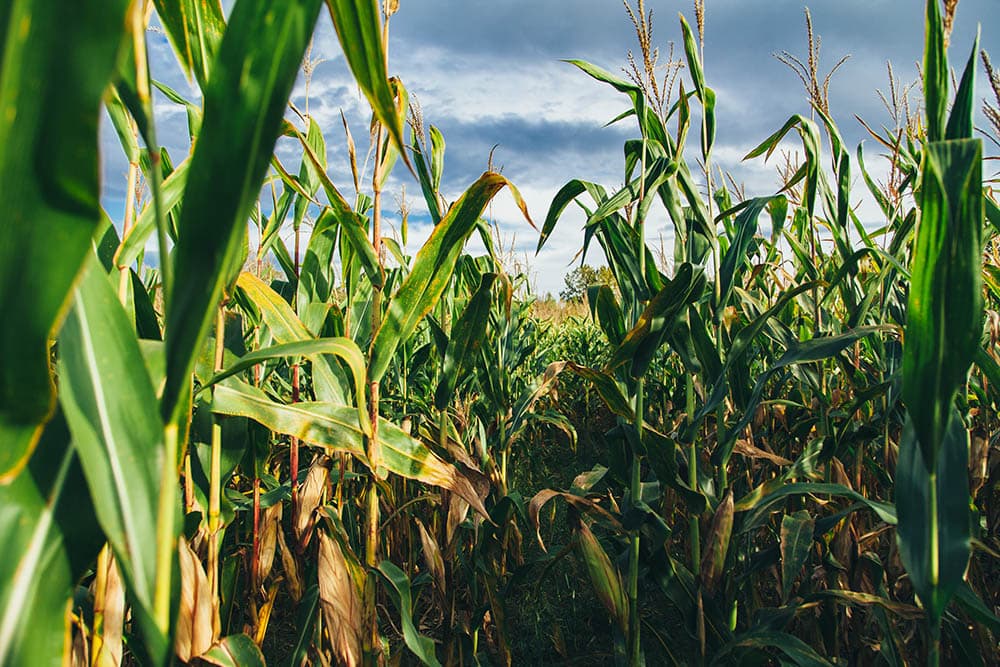
While spinach and corn may be planted together in some gardens, they are not great for each other. For one, spinach is relatively shade-tolerant, while corn is not. This means spinach may quickly outcompete corn for sunlight and other essential nutrients in the soil.
Additionally, spinach has a deep tap root system that can easily compete with corn’s shallow roots for water and other nutrients in the soil. As such, it’s usually best to keep spinach and corn far away from each other.
Final Thoughts
Spinach is one of the best vegetables to plant in your garden. It is relatively easy to maintain and can grow in diverse climates. Don’t worry too much about winter because it is as cold-hardy as they come.
Our list includes some of the best companion plants for spinach that you might want to try. Feel free to try different plants during different seasons to enjoy a range of benefits. By all means, potato, fennel, and mint should be kept far from your spinach.
Featured Image Credit: BearFotos, Shutterstock
Contents


